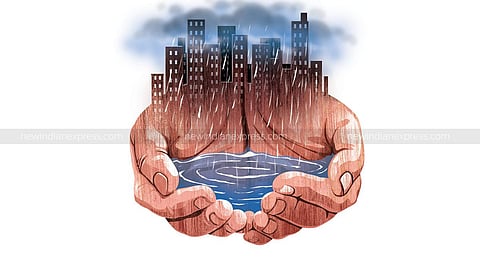

BENGALURU: Though the Bangalore Water Supply and Sewerage Amendment Bill, 2021, makes rainwater harvesting mandatory for houses, apartment complexes and mega commercial establishments in the city, Namma Metro seems to be lagging behind in this regard.
A recent survey revealed that no rain water harvesting (RWH) structure has been built on the buildings and open spaces of Namma Metro along the Purple and Green lines covering a distance of 41 km.
The report, Rainwater Harvesting in Namma Metro 2.0, by ActionAid stated that Bengaluru Metro Rail Corporation’s (BMRCL) lines from Kengeri to Magadi Road (11 stations) and Silk Board to Nagasandra (29 stations) have no functional RWH system.
Bengaluru is a growing city and instead of pumping water from other regions, rainwater can be preserved by installing RWH structures along the Metro lines. For the city to become sustainable, the government should act. By installing RWH structures, Namma Metro can help ensure water security, Raghavendra Pachhapur, senior project lead, ActionAid, told TNIE.
In its previous report, the organisation surveyed the stretch between MG Road and Byappanahalli Metro stations and highlighted the issue after which action was taken by BMRCL. Underground tanks, each with a capacity to store 3,000 litres of water, have been built at various places between these stations. Once the tanks fill up, excess water is let into RWH pits between the pillars. However, the same is not seen in other Metro stations.
Chief Engineer of BWSSB Suresh said, “Work on most of the sanctioned RWH structures is nearing completion.”